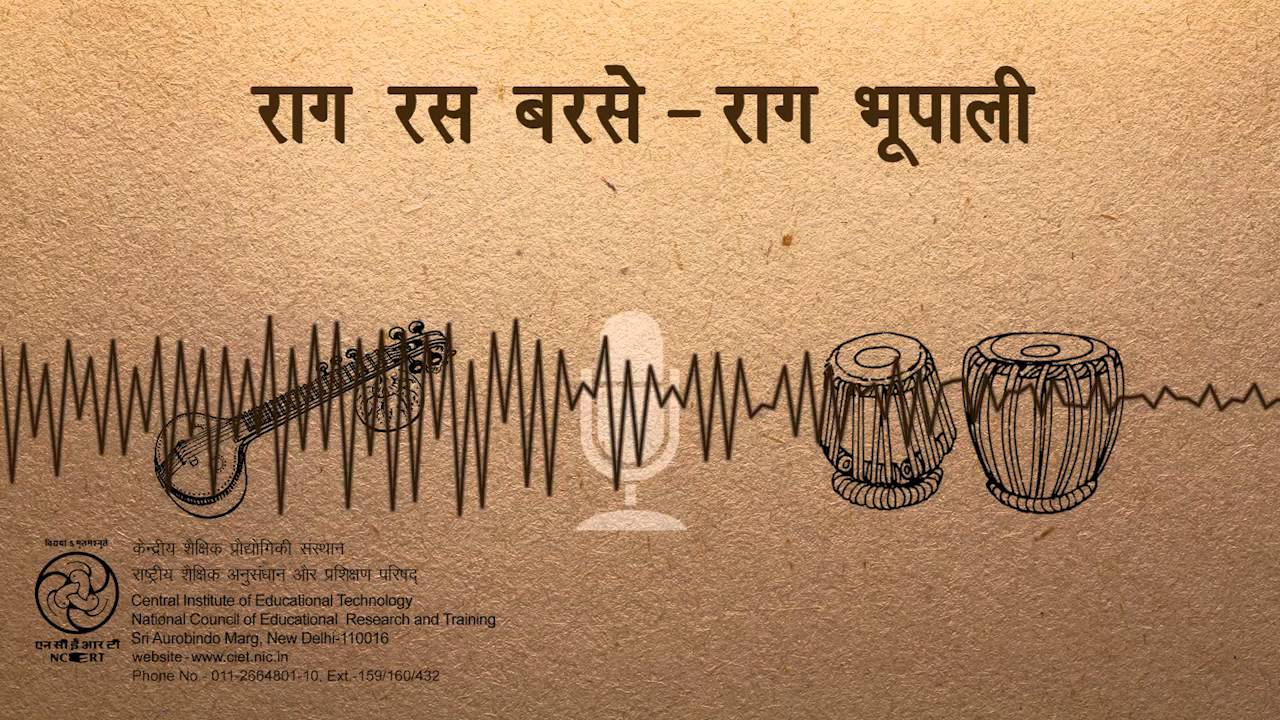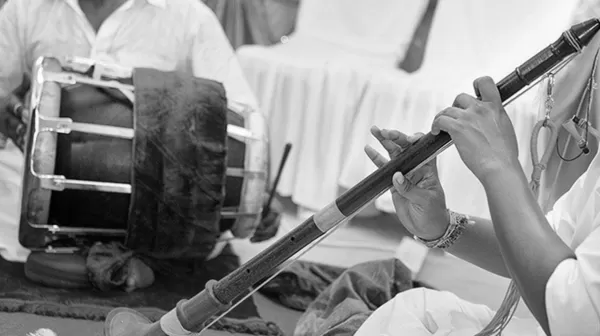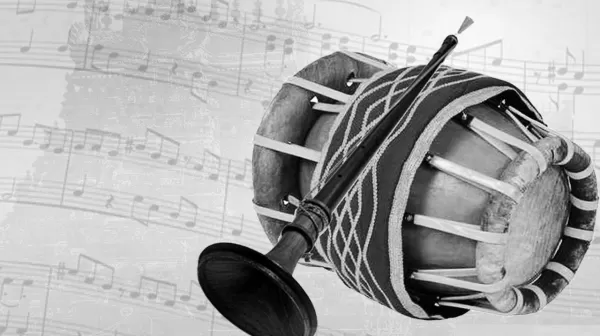Raga Bhoopali & Khamas ❤️ Sitar Instrumental Music ❤️ B.Sivaramakrishna Rao
Raga Bhoopali & Khamas - Sitar Instrumental Music - B.Sivaramakrishna Rao 00:03 – Raga – Bhoopali & Khamas B.Sivaramakrishna Rao: B. Sivaramakrishna Rao is a musical genius to reckon with in Chennai. A child prodigy with tuneful genes, he has built on natural musical endowments to evolve into a multifariously talented performer and composer. A master of the queen of musical instruments, the Sitar, he plays Thyagaraja kritis with as much panache as a Hindustani Gat. This enables him to accompany an Padma Vibhushan Dr. M. Balamuralikrishna with the same verve and ease as he would entrance the audience of Hindustani Music The sitar is a plucked stringed instrument, originating from the Indian subcontinent, used in Hindustani classical music. The instrument flourished under the Mughals, and it is named after a Persian instrument called the setar (meaning three strings). The sitar flourished in the 16th and 17th centuries and arrived at its present form in 18th-century India. It derives its distinctive timbre and resonance from sympathetic strings, bridge design, a long hollow neck and a gourd-shaped resonance chamber. In appearance, the sitar is similar to the tanpura, except that it has frets. Used widely throughout the Indian subcontinent, the sitar became popularly known in the wider world through the works of Ravi Shankar, beginning in the late 1950s and early 1960s. In the 1960s, a short-lived trend arose for the use of the sitar in Western popular music, with the instrument appearing on tracks by bands such as The Beatles, The Doors, The Rolling Stones and others. Bhoopali, also known as Bhoop, Bhopali or Bhupali, is a Hindustani classical raga. It is a pentatonic scale (uses 5 notes in ascending and descending scale). Most of the songs in this raga are based on Bhakti rasa. Since it uses 5 notes, belongs to the "Audav jaati" of ragas. The same raga in Carnatic music is known as Mohanam. Raga Bhoopali, Raga Yaman and Raga Bhairav tend to be the three basic ragas of Hindustani music, learnt first by its students. Khamas or Kamās/ Khamās /Khamāch/ Khamāj (கமாச்) is a rāgam in Carnatic music (musical scale of South Indian classical music). It is a janya rāgam (derived scale) from the 28th melakarta scale Harikambhoji. It is a janya scale, as it does not have all the seven swaras(musical notes) in the ascending scale. It is a scale that evokes Shringara rasa. It is suitable for javali type compositions Subscribe to our Indian Classical Music Channel: https://goo.gl/D2hEjg #sitar #classical #carnaticclassicalmusic #bsivaramakrishnarao #raga #bhoopali #indianclassicalinstrumentalmusic
Playlist
Category
राग
- 17 views
संबंधित राग परिचय
भूपाली
यह राग भूप के नाम से भी प्रसिद्ध है। यह पूर्वांग प्रधान राग है। इसका विस्तार तथा चलन अधिकतर मध्य सप्तक के पूर्वांग व मन्द्र सप्तक में किया जाता है। यह चंद्र प्रकाश के समान शांत स्निग्ध वातावरण पैदा करने वाला मधुर राग है। जिसका प्रभाव वातावरण में बहुत ही जल्दी घुल जाता है। रात्रि के रागों में राग भूपाली सौम्य है। शांत रस प्रधान होने के कारण इसके गायन से वातावरण गंभीर व उदात्त बन जाता है। राग भूपाली कल्याण थाट का राग है।
इस राग को गाते समय स्वरों पर न्यास का विशेष ध्यान देना चाहिए। यदि प ध प ; प ध ग प इस तरह से धैवत पर अधिक जोर दिया गया तो राग का स्वरूप बदल जाता है और यह राग देशकार हो जाता है। इसी तरह षडज से धैवत और पंचम से गंधार मींड में लेते समय यदि क्रमशः निषाद और मध्यम स्वरों का स्पर्श होने या कण लगने से भी भूपाली का स्वरूप बदल जाता है और यह राग शुद्ध कल्याण दिखने लगता है। अतः भूपाली को इन रागों से बचाते हुए गाना चाहिए। राग भूपाली में गंधार-धैवत संगती का एक विशेष महत्त्व है और रिषभ न्यास का स्वर है।
इसे कर्नाटक संगीत में राग मोहन कहा जाता है। यह एक पूर्वांग प्रधान राग है और इसे मध्य और मन्द्र सप्तकों में गाया जा सकता है। यह स्वर संगतियाँ राग भूपाली का रूप दर्शाती हैं -
सा ; सा ,ध सा रे ग ; रे ग सा रे ,ध सा ; सा रे ग प ; प ग रे ग ; रे प ग ; ग सा रे ; रे ,ध सा ; ग रे ग ; प ग ; प ध प प ; ध प ; ग प रे ग रे सा ,ध सा ; सा रे ग रे ग प ध सा' ; प ध प सा' ; सा' सा' ; रे' सा' ध सा' ; ध सा' रे' ग' रे' सा' ; ध सा' ध प ग रे ग ; प रे ग रे सा ; रे ,ध सा ;
थाट
राग जाति
गायन वादन समय
Tags
राग
- Log in to post comments
- 12311 views
Comments
मोहनम
Mohanam is a rāga in Carnatic music (musical scale of South Indian classical music). It is an audava rāga (or owdava rāga, meaning pentatonic scale). It is usually described as a janya rāga of Harikamboji (28th Melakartha Raga). However, alternate opinions suggest that Mechakalyani may be a more appropriate classification based on the lakshana of the raga.
The equivalent of Mohanam in Hindustani music is Bhoop (or Bhopali).
| आरोहणम् | स रि२ ग३ प ध२ स |
|---|---|
| अवरोहणम् | स ध२ प ग३ रि२ स |
| जीवस्वराः | ग, ध, रि |
| न्यासस्वराः | स, ग, ध, रि |
| रसः | करुणा, भक्तिः |
| समयः | सायंकाल: |
| जनकरागः | हरिकाम्बोधि |
| प्रसिद्धकीर्तनानि | कपालि, नन्नुपालिम्प, परिपाहिमाम् नृहरे, |
- Log in to post comments
- 194 views












राग भूपाली का परिचय
राग भूपाली का परिचय
वादी: ग
संवादी: ध
थाट: KALYAN
आरोह: सारेगपधसां
अवरोह: सांधपगरेसा
पकड़: गरेसाध़सारेगपगधपगरेगप़ध़सारेग
रागांग: पूर्वांग
जाति: AUDAV-AUDAV
समय: रात्रि का प्रथम प्रहर
हम तुमसे न कुछ कह पाये - जिद्दी
ज्योति कलश छलके - भाभी की चुड़ियाँ
कांची रे कांची रे - हरे रामा हरे कृष्णा
पंछी बनूं उड़ती फिरूं - चोरी चोरी
पंख होती तो उड़ आती रे - सेहरा